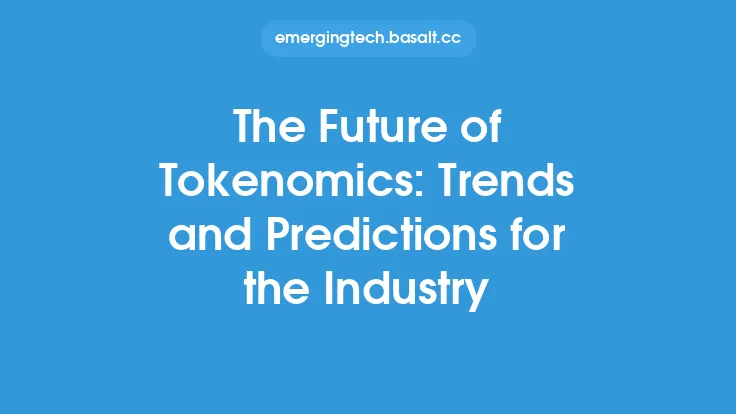The concept of decentralized applications, also known as dApps, has been gaining significant attention in recent years due to their potential to revolutionize the way we interact with the internet and each other. At its core, a decentralized application is a software program that runs on a blockchain network, allowing for secure, transparent, and tamper-proof data management. This technology has the potential to disrupt traditional industries and create new opportunities for innovation and growth.
Introduction to Decentralized Applications
Decentralized applications are built on top of blockchain technology, which allows for the creation of a decentralized network of nodes that work together to validate and record transactions. This decentralized architecture provides a number of benefits, including increased security, transparency, and resistance to censorship. Decentralized applications can be used for a wide range of purposes, including social media, gaming, finance, and more.
Key Characteristics of Decentralized Applications
There are several key characteristics that define decentralized applications. These include:
- Decentralized data storage: Decentralized applications store data on a blockchain network, rather than on a centralized server. This provides increased security and resistance to data breaches.
- Open-source code: Decentralized applications are typically built using open-source code, which allows developers to review and modify the code as needed.
- Autonomous operation: Decentralized applications can operate autonomously, without the need for a central authority or intermediary.
- Token-based economy: Many decentralized applications use tokens or cryptocurrencies to incentivize users and facilitate transactions.
Benefits of Decentralized Applications
Decentralized applications offer a number of benefits, including:
- Increased security: Decentralized applications are more resistant to hacking and data breaches, due to the decentralized nature of the blockchain network.
- Improved transparency: Decentralized applications provide a transparent and tamper-proof record of all transactions, which can help to build trust and accountability.
- Resistance to censorship: Decentralized applications are more resistant to censorship, as they are not controlled by a central authority.
- Increased accessibility: Decentralized applications can provide increased accessibility, as they can be accessed from anywhere in the world with an internet connection.
Challenges and Limitations of Decentralized Applications
While decentralized applications offer a number of benefits, there are also several challenges and limitations to consider. These include:
- Scalability: Decentralized applications can be limited by the scalability of the underlying blockchain network.
- Regulation: Decentralized applications are still largely unregulated, which can create uncertainty and risk for developers and users.
- User experience: Decentralized applications can be complex and difficult to use, which can create a barrier to adoption.
- Interoperability: Decentralized applications can be limited by the lack of interoperability between different blockchain networks.
Real-World Examples of Decentralized Applications
There are many real-world examples of decentralized applications, including:
- Social media platforms: Decentralized social media platforms, such as Mastodon and Diaspora, provide a more secure and transparent alternative to traditional social media platforms.
- Gaming platforms: Decentralized gaming platforms, such as CryptoKitties and Decentraland, provide a more immersive and interactive gaming experience.
- Finance platforms: Decentralized finance platforms, such as MakerDAO and Compound, provide a more secure and transparent alternative to traditional financial systems.
- Supply chain management: Decentralized supply chain management platforms, such as Waltonchain and VeChain, provide a more secure and transparent way to track and manage supply chains.
Future of Decentralized Applications
The future of decentralized applications is exciting and uncertain. As the technology continues to evolve and improve, we can expect to see new and innovative use cases emerge. Some potential future developments include:
- Increased adoption: As decentralized applications become more user-friendly and accessible, we can expect to see increased adoption and mainstream recognition.
- Improved scalability: Advances in scalability solutions, such as sharding and off-chain transactions, will help to improve the performance and usability of decentralized applications.
- Regulatory clarity: As governments and regulatory bodies begin to provide more clarity and guidance on decentralized applications, we can expect to see increased investment and innovation in the space.
- Interoperability: The development of interoperability protocols and standards will help to enable seamless interaction between different blockchain networks and decentralized applications.





